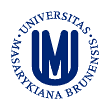Fetopathology and developmental pathology of the embryo and fetus
Marta Ježová, Josef Feit et al.




Complex deformity of the foot which consists or equinus (the foot in plantar flexion), varus, forefoot adduction and inversion, cavus deformity. From the word equinus meaning like a horse.
True etiology remains unknown despite several theories:
The person walks on the outer part of the sole, the heel is upward. The foot is smaller than normal, musles of the calf are hypotrophic.
40 % cases are bilateral.
Pedes equinovari:
 Pedes equinovari, Macro, autopsy (73696)
Pedes equinovari, Macro, autopsy (73696)